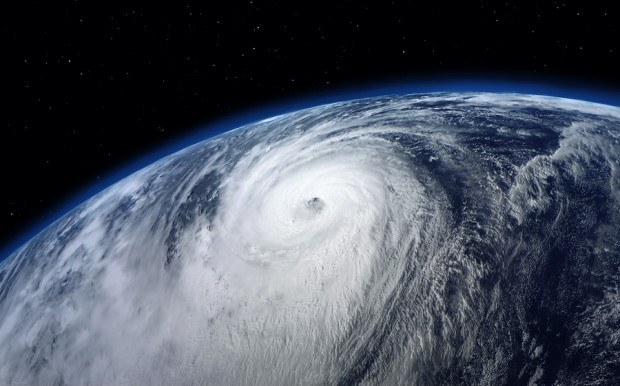Typhoons are peaking in strength farther north in the western Pacific Ocean, and that may have consequences for Japan and the Korean peninsula in years to come, according to researchers.
Tropical cyclones, the family name for hurricanes and typhoons, hit top strength more to the north in the western Pacific and farther south in the southern Indian Ocean from 1982 to 2012, according to a letter published Wednesday in the journal Nature. A similar trend hasn’t been detected in the Atlantic or eastern Pacific.
“Japan and the Korean peninsula are a couple of regions that have the potential to be under greater risk,” James Kossin, the lead author and a National Climatic Data Center scientist based at the University of Wisconsin, said in an interview.
On average, storms have been peaking 35 miles closer to the poles each decade for the past 30 years, so they are now 105 miles deeper into each basin, according to the research by Kossin and his co-authors, Kerry Emanuel, a professor of atmospheric science at the Massachusetts Institute of Technology in Cambridge, and Gabriel Vecchi, a scientist at the Geophysical Fluid Dynamics Laboratory in Princeton, N.J.
The shift is consistent with independent studies that have shown tropical regions have expanded because of climate change, Kossin said.
Expanding Tropics
The previous studies have found that the depletion of the ozone layer, an increase in greenhouse gases and more aerosols, such as black carbon, in the atmosphere may all be contributing to the expansion of the tropics, Kossin said.
The latest study shows there is a consequence to the expansion of the tropics, and Kossin said he hopes it will spur more research.
“I hope our results will galvanize those folks who study tropical expansion to reduce the uncertainty of what is fulminating this,” he said.
Kossin said the lack of a similar trend in the Atlantic is probably more due to conditions in that basin, where ocean surface temperatures have been warmer, more storms have been forming and there has been a decrease in aerosol air pollution since the mid-1990s.
“In the last 30 years, the Atlantic has been unique among all the basins,” Kossin said.





















 Berkshire Hathaway Enters Post-Buffett Era as Share Prices Fall
Berkshire Hathaway Enters Post-Buffett Era as Share Prices Fall  Is the AI Boom a Bubble Waiting to Pop? Here’s What History Says
Is the AI Boom a Bubble Waiting to Pop? Here’s What History Says  Surge of Supercharged Hurricanes Prompt Call for Cat 6 Classification
Surge of Supercharged Hurricanes Prompt Call for Cat 6 Classification  How Insurers Can Avoid Post-Merger Technology Failure
How Insurers Can Avoid Post-Merger Technology Failure 


